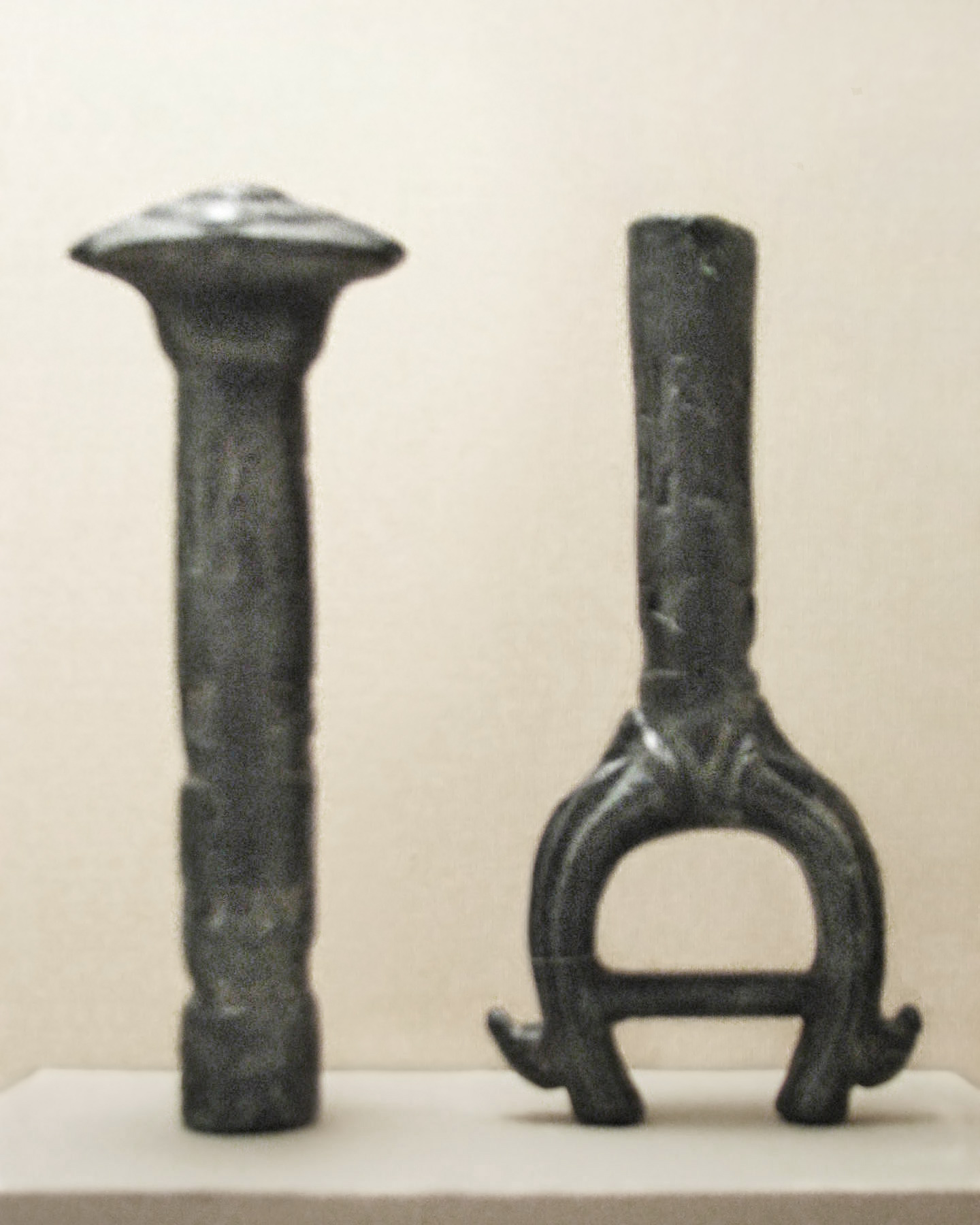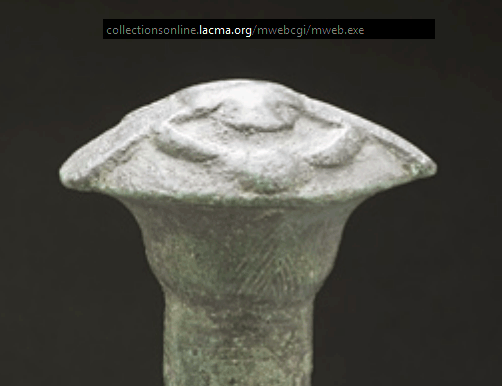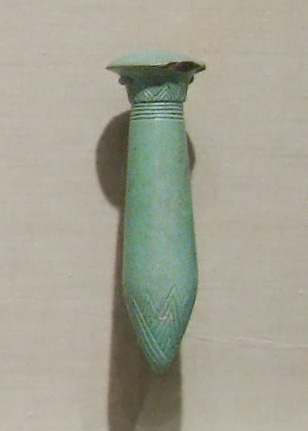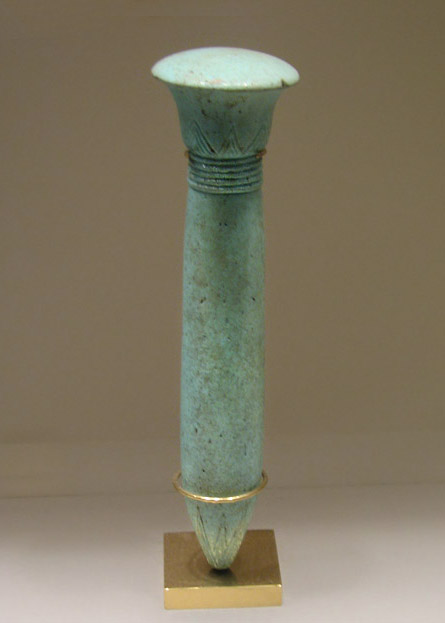
Metalwork; Sculpture, Bronze, 6 7/8 x 2 3/8 in. (17.6 x 6 cm)
Gift of Carl W. Thomas LACMA M.80.203.53
Staff Base, Late Period (724 - 333 BCE)
Metalwork; Sculpture, Bronze, 6 3/4 x 3 5/16 in. (17.1 x 8.4 cm)
Gift of Carl W. Thomas LACMA M.80.203.68

|
(From _Papyrus_, by R. B. Parkinson, Stephen Quirke, Ute Wartenberg, and Bridget
Leach) ""In the hieroglyphic script a stylized papyrus stem wrote words for 'green' and 'flourishing' (in Egyptian wadj), and the sign was used as an amulet that was important enough to merit its own spell in the Book of the Dead. Wadj-amulets were worn by the living as well as the dead, as recent excavations by the British Museum at the town sites of Ashmunein and Balamun have shown. In iconography, the same shape occurs as a sceptre held by goddesses. "Because of its height and dense growth in thickets, the plant is a haven for wildlife, especially birds. The wildlife and the luxurient greenery of the papyrus marshes made them the Egyptian equivalent of the European pastoral landscape in art and literature. They also had a religious dimension, symbolizing the emergence of the land from the primordial swamp, a site of primeval power." (page 11) |
 Faience Wadj-Scepter Brooklyn Museum 37 886E |
 Faience Wadj Scepter Metropolitan Museum 26.7.1036 |